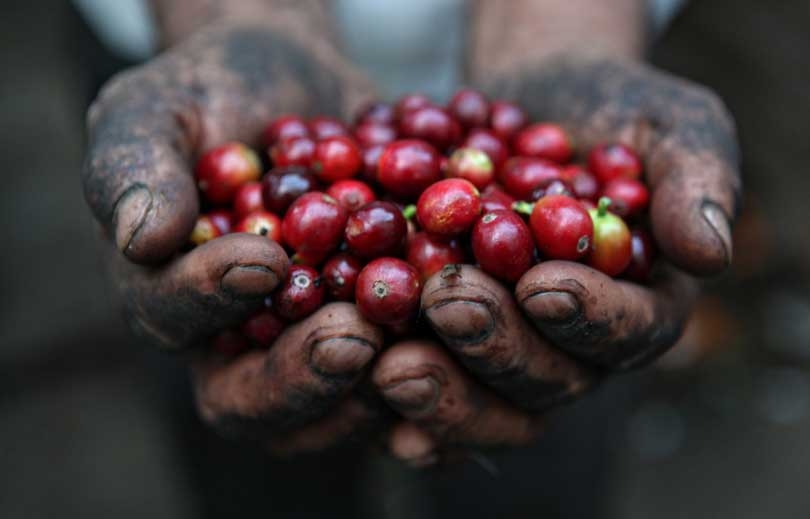Saying that coffee is ubiquitous in the West is a colossal understatement. The consumption of coffee is about one third the level of tap water in North America and Europe. Over half of all Americans over the age of eighteen consume coffee on a daily basis. In order to meet demand, the United States imports around $4 billion worth of coffee each year. However, as coffee consumption continues to increase, climate change is making it difficult to keep pace with demand.
According to a recent study by the Climate Institute, climate change will slash by half the amount of land suitable for coffee cultivation around the globe, especially in Africa and Central America. This has been something of an open secret, as coffee giants like Starbucks and Lavazza have gone on record in the past describing how climate change is posing a very real danger to the industry. The economic effect is not limited to coffee retailers though – the report went on to tell of the ways the livelihood of over 120 million people across two continents is imperiled. And, for the vast majority of those millions, coffee is the only thing keeping them barely above the level of destitution.
Prior to the Climate Institute’s savage body blow to the coffee industry, the lion’s share of the press coffee had received this year involved the findings of the International Agency for Research on Cancer (IARC) who released a landmark study of coffee and its relationship to various types of cancers. The agency initially classified coffee as “possibly carcinogenic to humans” when it first examined the issue in 1991. After a quarter century and a review of thousands of relevant studies, IARC backed off of its assessment, downgrading coffee’s potential to cause cancer as “not classifiable” regarding its carcinogenic potential. In addition, the agency not only didn’t find any credible link to coffee and cancer, it also found that there’s evidence showing coffee’s ability to potentially reduce the risk of certain kinds of cancers. IARC was in serious need of good press of its own. The agency has suffered withering criticism in the past several months over findings that red meat is a carcinogen and bacon is, for purposes of cancer, the functional equivalent of diesel exhaust. A similar spat involved the popular pesticide glyphosate, after IARC broke ranks with several regulatory agencies (like the EPA and the EU’s EFSA) and declared the substance “probably carcinogenic” despite shaky evidence.
With the production of coffee out of sight, and therefore out of mind, of most in the West, the impact of climate change was little acknowledged or understood. But, for the coffee growers in East Africa and Central America, the potential, even probable, effect of climate change has long been known. According to a separate study, two thirds of the land used to grow coffee in places like Ethiopia would become “unviable” due to climate change by 2100. Farmers in Tanzania have seen their crop yields halved over the last sixty years due to increased nighttime temperatures. Uganda is experiencing a similar situation, whereby rising temperatures are pushing farmers to higher and higher altitudes, despite lacking the wherewithal and knowhow to adapt.
In addition to a massive drop in quantity, farmers have also reported a significant fall-off in quality as well. Thanks to a lack of rainfall, beans are being harvested prior to maturity, which means a harvest full of beans lacking in suitable aroma, proper color, and sufficient size. Modern irrigation might mitigate these effects, but for the average coffee farmer toiling in the shadow of Kilimanjaro, a suitable system would cost him the proceeds of almost all of four years’ worth of his crops. For farmers who, even in ideal circumstances, find themselves teetering on the razor-thin edge between total economic collapse and managing to eke out enough to go on for another year, the situation is nothing less than completely disastrous.
The struggling coffee farmer is not the only one who will feel the effect of climate change upon the coffee industry. Citing the increased impact of severe hurricanes, mudslides, erosion, many farmers in Central America have dropped the crop altogether. Fewer growers means an obvious decline in overall production, putting an additional strain upon the global supply. The 2015-2016 coffee season saw a deficit of 3.5 million bags, an improvement from the prior season’s gap of 6.4 million bags to be sure, but with demand increasing each year by four million to five million bags, any deficit is problematic in the extreme.
Coffee growers also find themselves battling political instability to bring their crops to market. Ecuador has a climate perfectly suited to coffee cultivation but, after the drop in prices a decade ago, farmers have been unwilling to gamble on coffee again. As coffee plants take between three and five years to mature and produce their first crop of beans, the years of protests, strikes, government instability, and attempted coups make the prospect of planting now for a crop that won’t mature until several years seems like a poor decision. There are successful attempts at establishing new coffee crops in formerly politically chaotic countries like South Sudan, but, without immediate action on climate change, such efforts may be doomed to failure in the long run.
As far as the average coffee consumer is concerned, the beloved aromatic beverage is only as far away as the nearest coffee shop. But, if action isn’t taken soon to remedy the problems plaguing the industry, the world may wake up one day to a carafe that is permanently empty.


